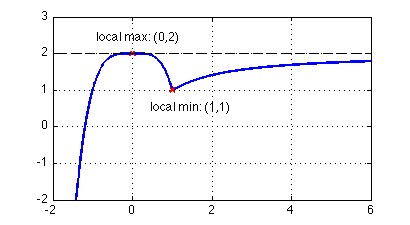Science:Math Exam Resources/Courses/MATH100/December 2010/Question 04 (e)
{{#incat:MER QGQ flag|{{#incat:MER QGH flag|{{#incat:MER QGS flag|}}}}}}
• Q1 (a) • Q1 (b) • Q1 (c) • Q1 (d) • Q1 (e) • Q1 (f) • Q1 (g) • Q1 (h) • Q1 (i) • Q1 (j) • Q1 (k) • Q1 (l) • Q1 (m) • Q1 (n) • Q2 (a) • Q2 (b) • Q2 (c) • Q3 • Q4 (a) • Q4 (b) • Q4 (c) • Q4 (d) • Q4 (e) • Q5 • Q6 • Q7 • Q8 •
Question 04 (e) |
|---|
|
Full-Solution Problems. In questions 2-8, justify your answers and show all your work. If a box is provided, write your final answer there. Simplification of answers is not required unless explicitly requested. Let NOTE: Another notation for tan-1(x) is arctan(x) Sketch the curve y = ƒ(x), showing all the features given in items (a) to (d) above and giving the (x, y) coordinates for all points occurring above (if any). |
|
Make sure you understand the problem fully: What is the question asking you to do? Are there specific conditions or constraints that you should take note of? How will you know if your answer is correct from your work only? Can you rephrase the question in your own words in a way that makes sense to you? |
|
If you are stuck, check the hint below. Consider it for a while. Does it give you a new idea on how to approach the problem? If so, try it! |
Hint |
|---|
|
Parts a) - d) have each told you something about how the function should appear when you sketch it: Does the function have a discontinuity? (see part a) Does the function has have any vertical asymptotes or approach any points/lines as x gets large? (see part b) Does the function have any maxima/minima? (see part c) What is the concavity of the function? (see part d) |
|
Checking a solution serves two purposes: helping you if, after having used the hint, you still are stuck on the problem; or if you have solved the problem and would like to check your work.
|
Solution |
|---|
|
From parts a) - d), we found that [1] f is continous everywhere [2] There is a horizontal asymptote of for . [3] There is a local max at (0,2) and a local min at (1,1) [4] There are no inflection points at f is concave down everywhere except at x = 0, x = 1. From this information we can obtain an image that looks similar to this: |
{{#incat:MER CT flag||
}}




